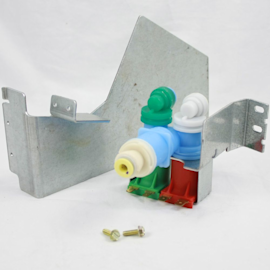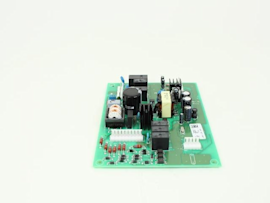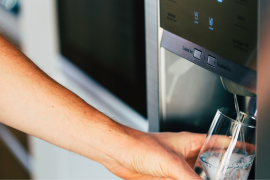
That ice-cold drink on a hot summer day might not be possible if it weren't for that great little ice maker in your refrigerator. When that ice maker stops working, you may be tempted to call a service technician. Before you pick up the phone, there are a few things you can check to make sure the ice maker actually is broken.
Water not reaching the ice cube tray could indicate a problem with the water inlet valve, but not always. The water line from the water valve to the ice maker can freeze, not letting water into the ice maker. A clogged water filter could also cause low or no water flow to the ice maker or the water dispenser. Once it's determined that neither of these are the problem, you should check the water valve.
Where to find the fridge water inlet valve
To check the refrigerator water valve, unplug the power cord and shut off the water supply to the refrigerator. Most foods will be okay if left in the refrigerator as long as the doors are closed; power will be off for only about 30 minutes when checking the valve. Wear work gloves to protect your hands. Access the water valve, usually found at the bottom rear of the refrigerator. The fridge water inlet valve can fail either electrically or mechanically.
Checking the valve for electrical failure
To check for an electrical failure, access the refrigerator water valve usually found at the bottom rear of the refrigerator cabinet. Use either a digital or an analog multimeter to check continuity–good electrical current–of the valve solenoid coils.
Disconnect the water supply line connected to the valve, and disconnect the wires from the terminals located on the solenoid coils. The number of coils will differ by model, and each coil will have two terminals.
Set the multimeter to the lowest Ohms of resistance setting, and make sure the meter is calibrated properly.
Place a probe on one of the terminals, and place the other probe on the other terminal. Do this for each solenoid coil.
If the meter measures infinite Ohms of resistance– the display on a digital meter does not change much or the needle on an analog meter does not move– the valve has no continuity and is bad.
Checking the valve for mechanical failure
To check for a mechanical failure of the water valve, it's easiest to rule out a water supply problem.
Disconnect the water supply line from the water valve.
Place a bucket under the end of the water supply line.
Turn on the water to the supply line and check the flow.
If the water flow seems weak or sporadic, the problem is with the water supply. A strong, steady flow could indicate the water valve has become restricted or clogged.
If the water inlet valve has failed, find the correct valve for your model and check out our repair guide on how to replace a refrigerator water valve.








